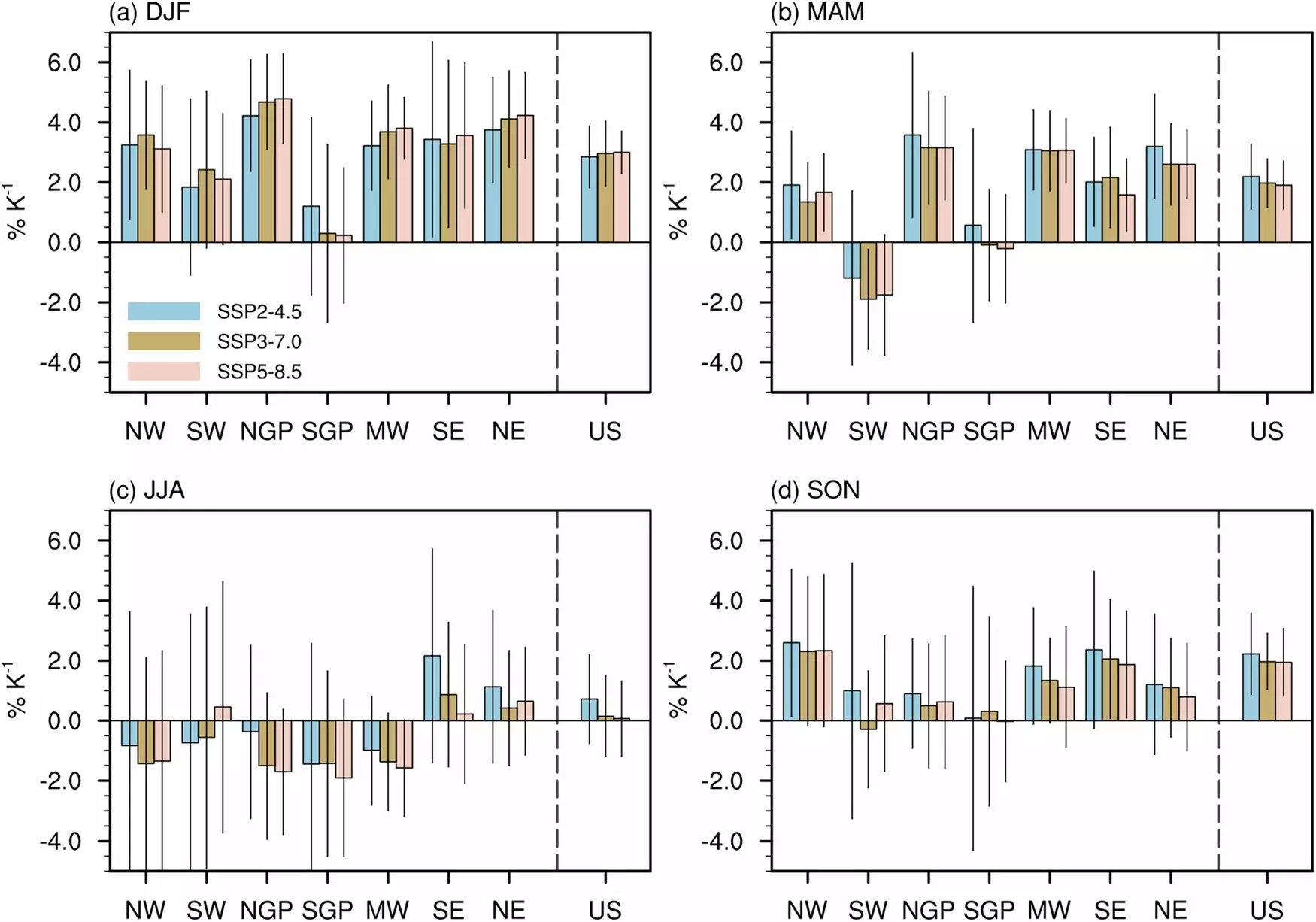Climate change has been a pressing concern for researchers, policymakers, and citizens alike, fundamentally reshaping how we perceive and respond to environmental shifts. A vital recent study emerging from the University of Illinois Chicago, helmed by scientist Akintomide Akinsanola, paints a compelling picture of significant changes expected to influence winter precipitation across the United States. With global warming as a backdrop, this research highlights both the intensity and frequency of winter rainfall, challenging long-standing assumptions about seasonal weather patterns and their broader implications for society.
Utilizing an extensive array of 19 Earth system models, the research team undertook a comprehensive analysis aimed at deciphering how winter precipitation trends might evolve by the end of the 21st century. By comparing projected conditions from 2070 to 2099 against data from 1985 to 2014, the study offers evidence suggesting that average winter precipitation could rise by 2% to 5% for each degree of temperature increase. While these percentages may initially appear modest, the ramifications are anything but: regions particularly vulnerable to climate impacts, such as the Northwest and Northeast, are predicted to experience notably pronounced increases.
Moreover, the study delineates the increasing occurrence of “very wet” winters, now defined as those that sit within the top 5% of historical records. Potentially, these extreme weather events could manifest as frequently as once every four years—an alarming prospect for infrastructure and natural resource management.
The study reveals significant geographic disparities in projected winter precipitation changes. While most U.S. regions are likely to face heightened winter rainfall, the Northeast and Midwest may experience the sharpest spikes in extreme wet winters. Interestingly, the southern Great Plains stand apart in this trend, where projected changes remain small and uncertain. Here, the risks of frequent droughts could overshadow the potential for increased wetness, demonstrating the complexities involved in predicting future climate scenarios.
Regional differences necessitate tailored approaches to climate adaptation, as various locales will require unique strategies to contend with their specific challenges. The Midwest, for example, may need to reinforce existing infrastructure to withstand increased flooding, whereas the southern Great Plains must prepare for the potential implications of heightened dry spells.
Predicted changes in winter precipitation hold broad implications for agriculture, water resources, and other climate-dependent sectors. The shift from snow to rain in many areas could significantly alter hydrological cycles, impacting the timing and availability of water for agricultural use. This trend may compromise existing farming practices that rely on consistent snowpack levels for irrigation during warmer months. Essentially, these shifts could threaten food security, disrupt local economies, and necessitate an overhaul of agricultural methodologies.
As systems that rely on consistent weather patterns are threatened, the strain on water resources also becomes evident. Aquifers may deplete at unexpected rates, and water allocation strategies will need rethinking to ensure sufficient supplies as weather patterns diverge from historical norms.
Akinsanola emphasizes the necessity for proactive responses to these evolving precipitation patterns. Upgrading existing infrastructure, including drainage systems and buildings, will be crucial in effectively managing the increased risk of flooding as well as potentially devastating storm damage. Current designs will likely prove inadequate amid intensified weather events, and investing in resilience will be imperative to safeguard communities.
Moreover, as researchers continue to refine their models for predicting local weather patterns, the urgency of these adaptations will only escalate. Akinsanola’s ongoing collaboration with the Environmental Science Division at Argonne National Laboratory positions his research at the forefront of understanding how extreme weather will manifest on smaller scales.
The shifting landscape of winter precipitation in the U.S. serves as a call to action for individuals, communities, and policymakers alike. As global warming continues to challenge our perceptions of weather and climate, adapting to heightened winter rainfall must become a priority. From the agricultural sector to infrastructure design, these findings shed light on the need for comprehensive strategies aimed at resilience, sustainability, and preparedness in the face of extraordinary climatic changes. As we venture further into the 21st century, the need for a harmonious relationship with our environment has never been more critical.

